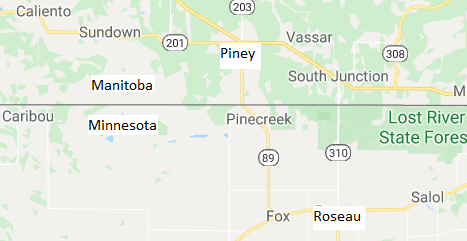 Sigurður Jónas Magnússon went west to Winnipeg in Manitoba in 1888 and settled in the southeastern part of Manitoba, close to the US border. It was called Pine Valley and Icelanders named their settlement Pine Valley Byggð (Settlement). In 1934, an article by Sigurður about the settlement and the main settlers appeared in Ólafur S. Thorgeirsson’s Almanak. Sigurður says: “The area that was called the Pine Valley Settlement, lies along the line between Canada and the United States, and extends from west to east over almost 6 miles, or the majority of Range 11 and 12, and close to 9 miles north. This area is surrounded by sand ridges in three directions, east, north and west; were dense rows of big and tall trees of many species, with bogs in between. Many wild animals could be seen living in the forests. There is some slope from these ridges down to the lowlands, which are shallow valleys, rather wetlands; it runs from south to north and a stream flows along its eastern edge and south into the Roseau River south of the border. This valley is small wave-shaped, with forest belts and bays in between, widely usable for pasture.
Sigurður Jónas Magnússon went west to Winnipeg in Manitoba in 1888 and settled in the southeastern part of Manitoba, close to the US border. It was called Pine Valley and Icelanders named their settlement Pine Valley Byggð (Settlement). In 1934, an article by Sigurður about the settlement and the main settlers appeared in Ólafur S. Thorgeirsson’s Almanak. Sigurður says: “The area that was called the Pine Valley Settlement, lies along the line between Canada and the United States, and extends from west to east over almost 6 miles, or the majority of Range 11 and 12, and close to 9 miles north. This area is surrounded by sand ridges in three directions, east, north and west; were dense rows of big and tall trees of many species, with bogs in between. Many wild animals could be seen living in the forests. There is some slope from these ridges down to the lowlands, which are shallow valleys, rather wetlands; it runs from south to north and a stream flows along its eastern edge and south into the Roseau River south of the border. This valley is small wave-shaped, with forest belts and bays in between, widely usable for pasture.
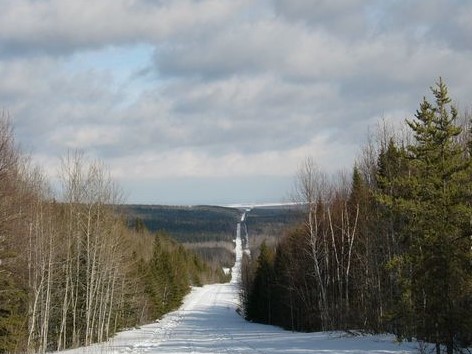 Icelandic Settlers: The first glimpse, short-lived to
Icelandic Settlers: The first glimpse, short-lived to
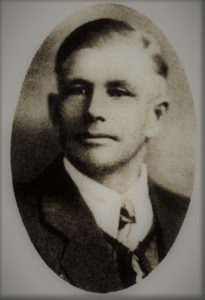
Erlendur Jónsson Photo: Almanak 1934
the Icelanders who settled here in the settlement, was largely caused by a large forest fire in the autumn of 1897 that spread over the northern part of the Roseau settlement, where several Icelanders had settled. The fire spread north across the border; burned there a large acreage and thus formed an open few for view and traffic, but the earth was black with fire ash. News of this fire must have been heard everywhere, even to Dakota, because in the autumn of 1898 two brothers came from there: Þóroddur and Þórviður Magnússonsson Halldórsson for a national inspection. They met here for two friends: Erlend Jónsson and Pál Eyjólfsson, young single and generous men; they had built a log cabin and settled there the year before. They are the first settlers of this settlement of Icelandic people. When the Icelanders started moving into the Pine Valley settlement, all the land there was unsurveyed and it was therefore difficult to assume the proper location of the land on which people settled, but it was not long before land surveying began. It turned out that very few had to move. At that time there was an overgrowth of fire, a forest of fire, bushes and ruins of fleas, a continuous swarm of flies intolerable to humans and animals, which lasted from spring to autumn.” Erlendur and Jóhannes Páll Eyjólfsson, pioneers in the area had a lot in common. They both seemed to have done well in Iceland, Erlendur was chairman of various fish farmers and Jóhannes Páll was a trained goldsmith. He went to Copenhagen and planned more studies in goldsmithing but instead went west to Manitoba in 1886. A foreigner made a quick decision in Seyðisfjörður and sailed west to Canada in 1892. They both tried various things in west the following years, but their paths coincided in N. Dakota and in the fall of 1897, they moved east to the Pine Valley in Manitoba, where they built a small log cabin just north of the border. The country looked rather bad after the forest fires, but they stayed there, almost completely throughout the winter, but in the spring they went south across the border to work for farmers in Minnesota. They returned to their cabin in Manitoba in the fall and are now much better off than the year before. Their benefits gradually grew, and before the end of the century, Erlendur had built a very good log house on their property. He was therefore ready to receive his mother, the widow Guðný Ívarsdóttir in 1900. Her stay there was short, she died there in the settlement a year later. Foreigners emigrated from the settlement in 1904 and settled in Los Angeles in 1922. Jóhannes Páll lived in the settlement until 1905, moved that year west to the Pacific Ocean with his wife and children and settled in Washington state.
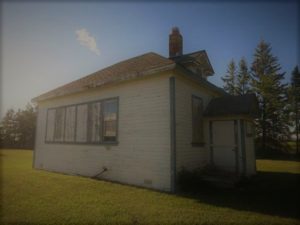
School in Pine Valley. Photo: MHS
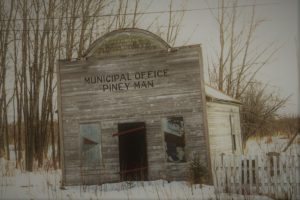
The old office of the settlement was once the meeting place of Icelandic settlers and residents. Photo: MHS
Settlement Growth – Post Office: Pétur Pálmason had come west across the ocean in 1875 with his parents who settled in New Iceland. From there, they made their way to N. Dakota, where Pétur grew up. He bought land in one of the settlements and lived there for a few years. He moved from there to Roseau, Minnesota, where he lived for a few years, and from there he crossed the border into Pine Valley. He immediately took land, built a house and started farming. A few of his countrymen lived near his land, and soon Pétur saw the need for a post office. He applied for permission to open such on his land and it was approved. His post office was called the Pine Valley Post Office. Most of the settlers were poor, some had neither horses nor oxen, let alone cows, but they were young and knew how to work, as they were either born in the west or had grown up there in some Icelandic settlement. In 1903 a school was built and teaching began, a congregation belonging to the Icelandic denomination was formed and Icelandic priests were brought to the village to celebrate Mass, baptize, confirm and marry. In 1906, the settlement connected to the railroad system in southern Manitoba and soon saw the small village of Piney was formed. The name of the settlement was changed accordingly and was henceforth called Piney settlement. During these years, Icelanders were vocal in all matters of progress, had a large majority in the local government for years, bought land for a cemetery, made sure that every town got in touch by phone, set up a market scale in the village, opened shops and various services.
English version by Thor Group.
